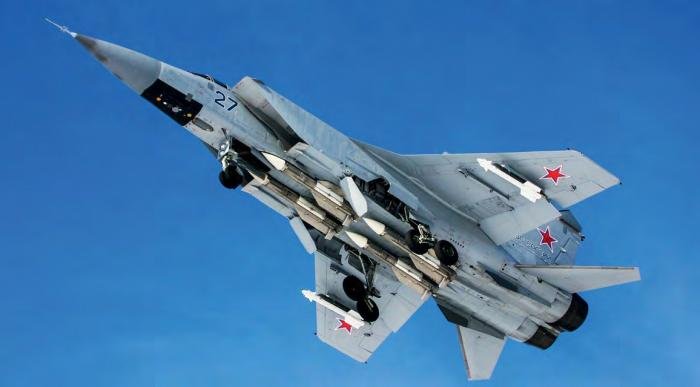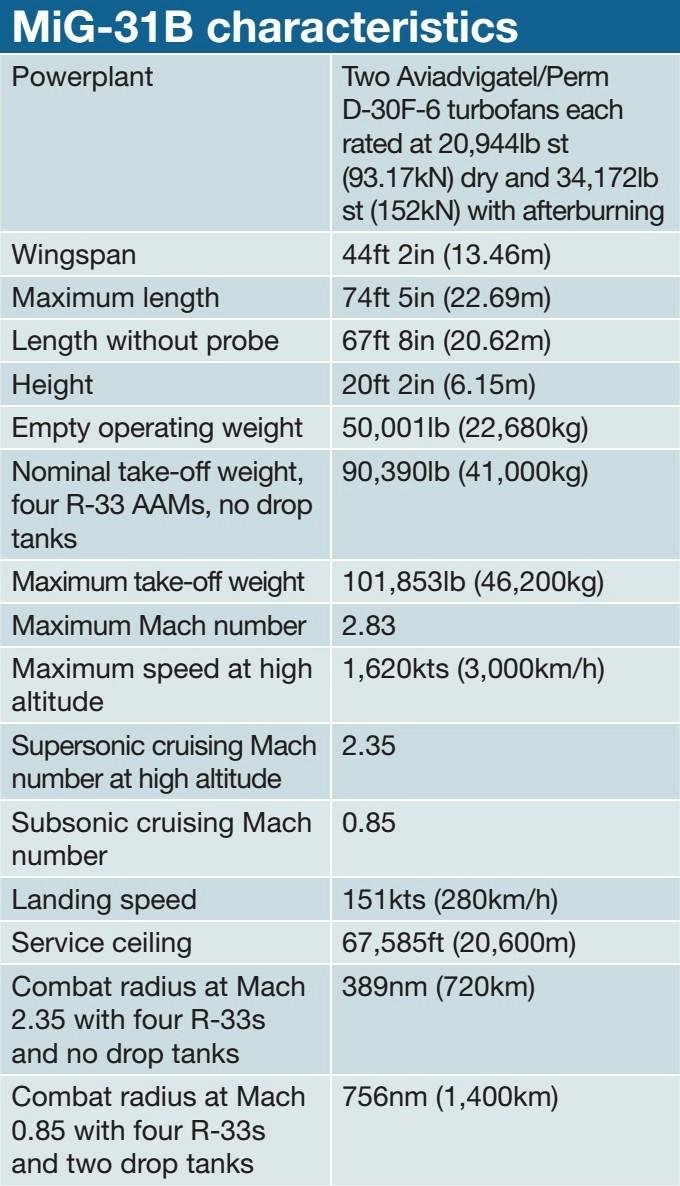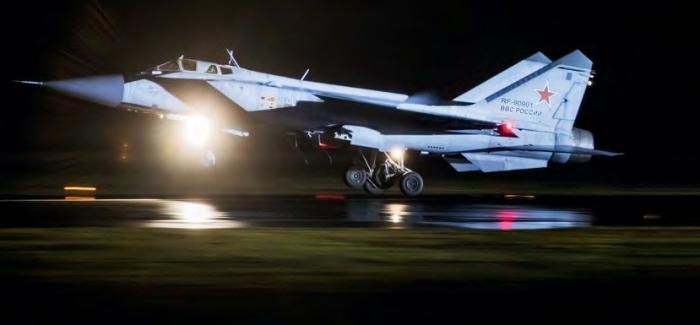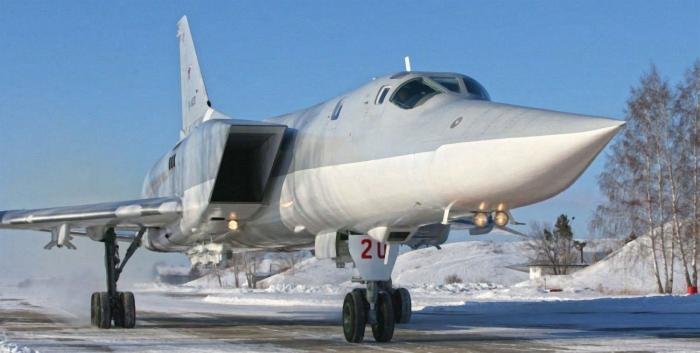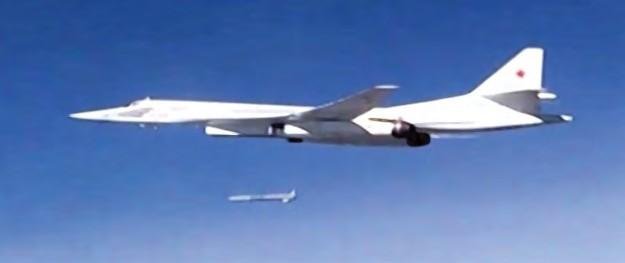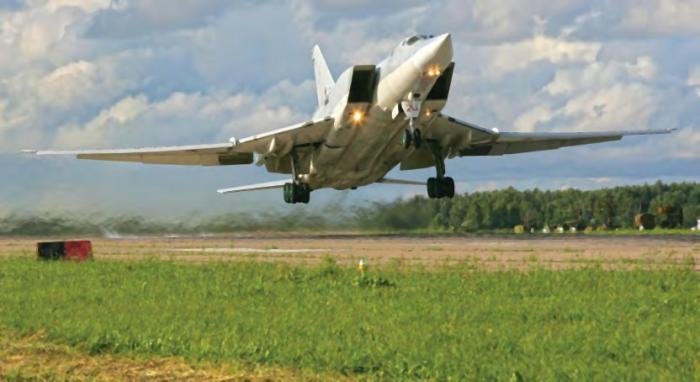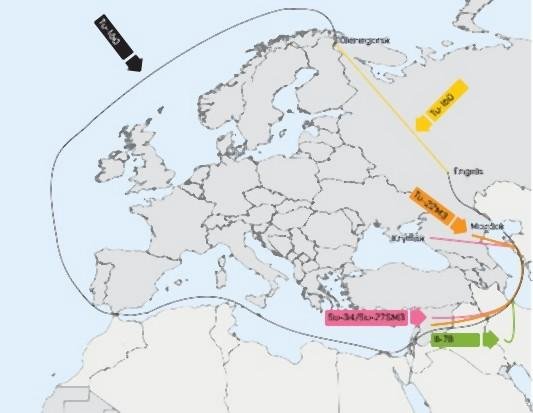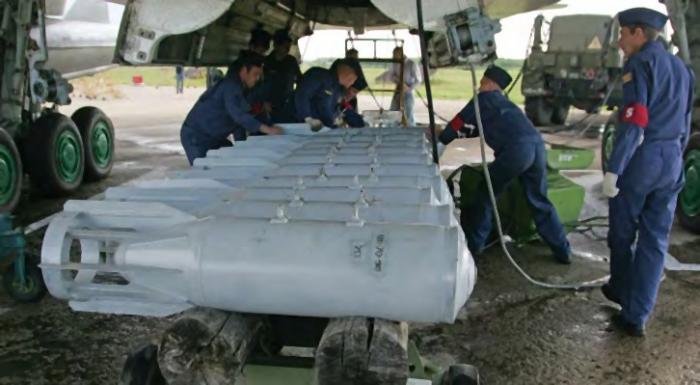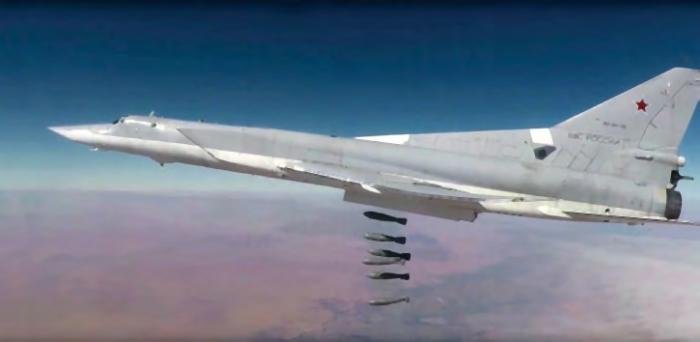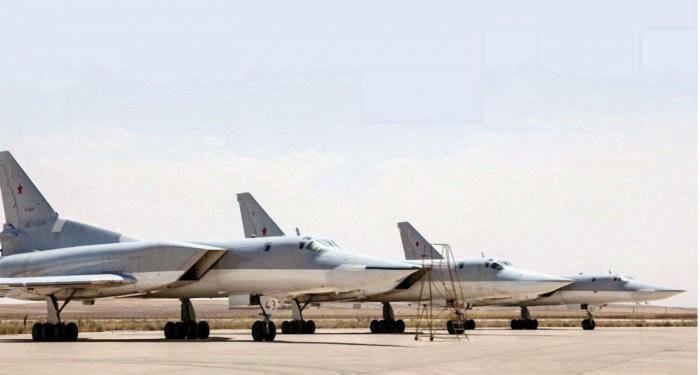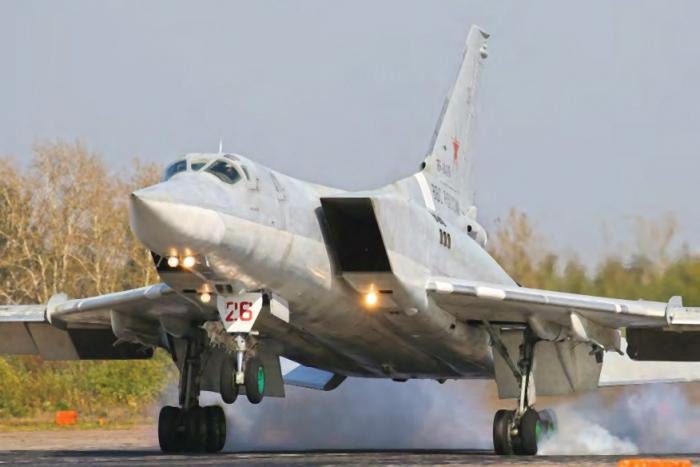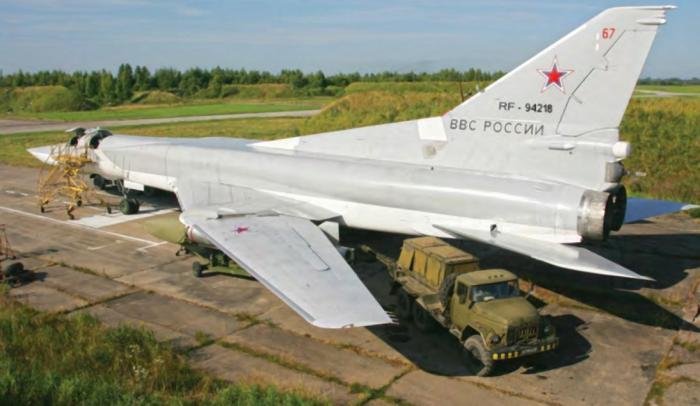Fatman17
THINK TANK: CONSULTANT
- Apr 24, 2007
- 36,852
- 43,211
- Country of Origin

- Country of Residence

The upgraded model can be identified by its four smaller wing pylons and pilot’s periscope, here raised.
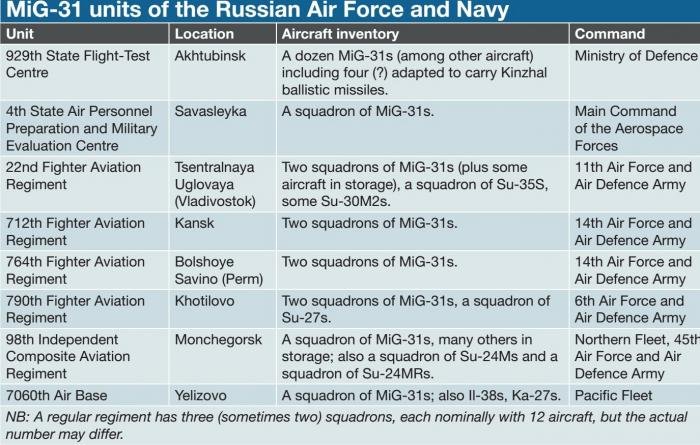
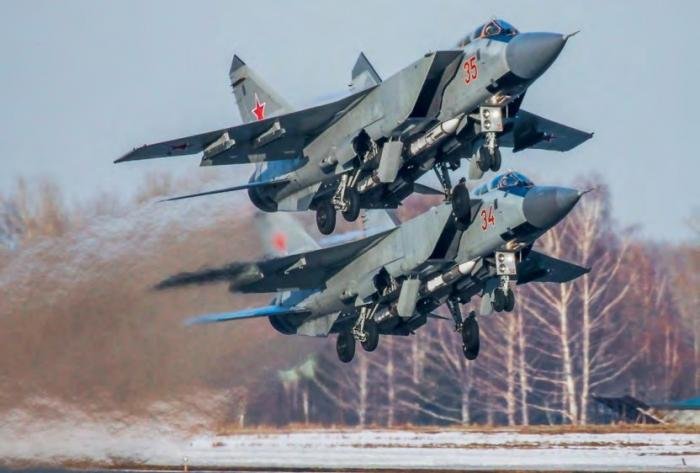
MiG-31BMs ‘Red 35’ and ‘Red 34’ of the 790th Fighter Aviation Regiment at Khotilovo air base, where they serve alongside Su-27s. Note in this shot, the six-barrel 23mm GSh-6-23 cannon ‘scabbed on’ to the starboard fuselage. The gun is provided with 260 rounds
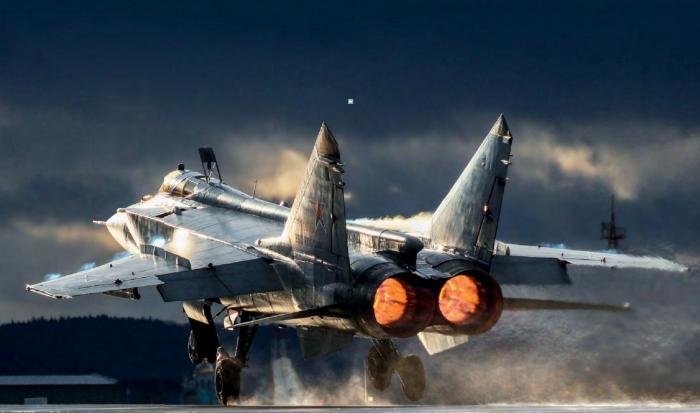
MiG-31BM gets airborne from Bolshoye Savino. During a parliamentary hearing in April 2013, the then Russian Air Force commander-inchief Lt Gen Viktor Bondariev admitted that the MiG-31’s top speed of Mach 2.83 is no longer attained: “The aircraft flies at Mach 1.5; the [cockpit canopy] glass does not withstand [Mach 2.83] any more.”
Radar
The main purpose of the MiG-31BM upgrade was to enable the Foxhound to carry new types of AAMs as well as providing the radar with new modes and extended range. The upgraded Zaslon- AM (S-800AM) fire control system has an improved 8BM radar controlled by a new Baget-55-06 computer that replaced the old Argon-15A. The radar’s passive electronically scanned antenna remains unchanged.
The range of the upgraded radar is claimed to be 130nm for a fighter-type target, twice the previous range. It can track 24 targets and engage six of them simultaneously. Zaslon-A radars are repaired and upgraded to Zaslon- AM standard by the radar’s manufacturer, the Leninets plant in St Petersburg, under a project defined by the Tikhomirov NIIP institute in Zhukovsky. The 8TK IRST remains unchanged.
In the pilot’s (front) cockpit, some analogue instruments are replaced by a 5 x 5in (127 x 127mm) LCD mounted on the upper righthand side of the instrument panel. The WSO’s (aft) cockpit is retrofitted with two 6 x 8in (152 x 203mm) LCDs in place of the former cathode-ray tube (CRT) screens at the centre and right of the front panel.
The aircraft is retrofitted with new communication devices (R800L radios) and an improved navigation system including the A737 satellite navigation receiver. The airframe and engines remain unchanged; however, the airframe is overhauled to extend its lifetime to 30 years or 3,500 flight hours. It is possible that a subsequent round of repairs will provide another life extension.
Kinzhal hypersonic missile
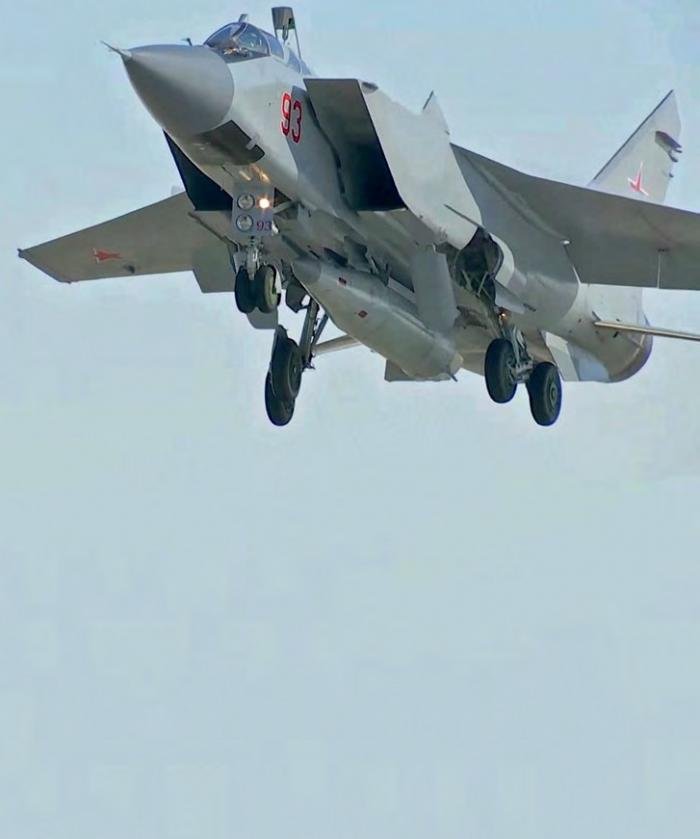
MiG-31 ‘93 Red’ carries a Kinzhal missile during tests at Akhtubinsk in the winter of 2017-18. Russian MoD
Thanks to its high-altitude cruise speed of Mach 2.35, the MiG-31 is a useful platform for various weapon systems, in addition to its standard interceptor function. On March 1, 2018, during his state of the nation speech, Russia’s President Vladimir Putin presented a video display about a strike system named Kinzhal (dagger). This consists of a MiG-31 carrying an Iskander ballistic missile on the centreline pylon. The 9M723 Iskander (SS-26 Stone) surface-to-surface missile has been operated by the Russian Army since 2007; it is 24ft (7.3m) long and weighs around 4 tonnes. The video presented by Putin showed the take-off of a test aircraft belonging to RAC MiG, MiG-31 ‘592 Blue’, with the missile carried on the centreline pylon. After the missile’s separation from the aircraft, the forward and aft fairings were jettisoned, and the rocket motor started. Next was an animation showing the missile hitting targets, comprising a warship resembling a US Navy Ticonderoga-class cruiser and a building. During his speech, Putin said that evaluation of the Kinzhal had been completed and “since December 1 of last year, the complex commenced test-combat duty on airfields of the Southern Military District”. Other sources indicate that the Kinzhal has been deployed at the 929th Test Centre at Akhtubinsk. Putin disclosed that “the missile flies at hypersonic speed, ten times greater than the speed of sound, performs manoeuvring on all flightpath segments that allows it to overcome with guarantee all existing and, I think, future anti-aircraft and anti-missile defence systems, and to deliver nuclear and conventional charges to targets at a distance of more than 2,000km.” On March 10, Russia’s defence ministry released another video shot at Akhtubinsk and showing the take-off of MiG-31s ‘91 Red’ and ‘93 Red’, each with a single Kinzhal missile under the fuselage. Deputy commander of the Akhtubinsk centre Valery Antsibor said that “since the beginning of this year, over 250 flights have been made within testcombat duty and combat training of the crews.”
Externally, only two details distinguish the MiG-31BM from previous versions. The large weapons pylon (previously intended for the R-40TD; AA-6 Acrid) is removed from the wing and replaced by a smaller pylon, suitable for R-73 (AA-11 Archer) and R-77-1 AAMs. R-73 and R-77-1 missiles may also be carried on the second underwing pylon, previously used only for a drop tank. Another new detail is a small periscope added in the cockpit canopy above the pilot’s head.
The MiG-31BM’s maximum take-off weight is 103,253lb (46,835kg), a little more than the basic version. Most of the performance details remain unchanged, except the ceiling of 65,620ft (20,000m) and range of 1,242nm, in an undisclosed configuration.
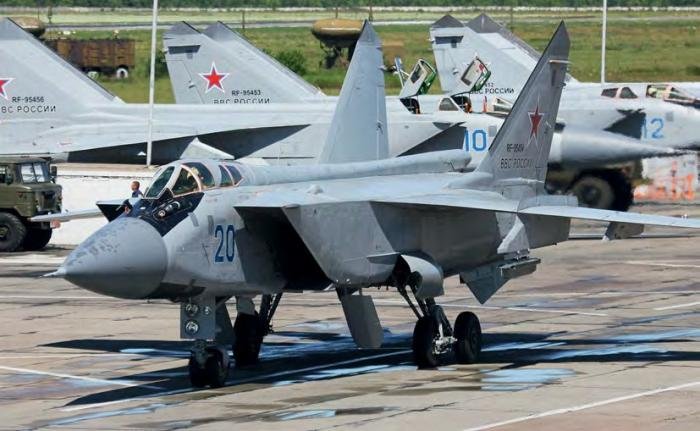
New missiles
The MiG-31BM’s weaponry is being supplemented by four R-37M AAMs with a range of 108nm. An example of the Vympel R-37M (izdeliye 610M; AA-13 Axehead) was launched for the first time by a MiG-31 during 2011 and the weapon completed state acceptance evaluation in early 2014. It is in series production at the Tactical Missiles Corporation’s factory in Korolev. The missile is powered by a dual-mode solidpropellant rocket motor. It flies to the target on a lofted trajectory profile controlled by an MFBU-610MSh seeker. The inertial navigation system receives mid-course radio corrections from the carrier aircraft, while a dual X- and Ku-band active-radar seeker is used for the terminal phase. The MiG-31BM also carries up to four R-73 short-range AAMs that replaced the very old medium-range R-40TDs and the small and obsolete R-60s (AA-8 Aphid).
In subsequent stages of the MiG-31BM upgrade, it is expected that the R-77-1 (AA-12B Adder) and then the K-77M mediumrange AAMs will be introduced. The variant is intended to carry up to four such missiles under the wing. Looking further ahead, the MiG-31 could be retrofitted with the ‘izdeliye 810’ very long-range AAM now being developed for the Su-57 fighter. The Zaslon radar software is scheduled for improvement next; a new IRST and an advanced self-defence suite are also being considered. Finally, a new KSU-31 flight control system is under development.
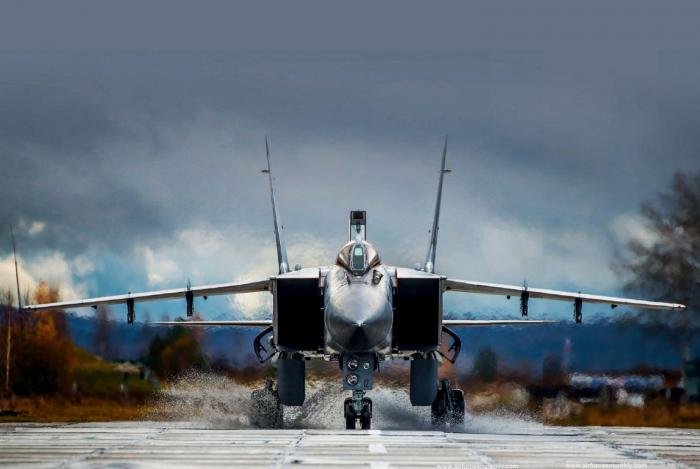
The business end of a MiG-31BM. Using its Zaslon-AM fire control system with upgraded 8BM radar, the MiG-31BM can detect a fighter-type target at twice the range of the previous radar. It can track 24 targets and engage six of them simultaneously.


MiG-31BMs ‘Red 35’ and ‘Red 34’ of the 790th Fighter Aviation Regiment at Khotilovo air base, where they serve alongside Su-27s. Note in this shot, the six-barrel 23mm GSh-6-23 cannon ‘scabbed on’ to the starboard fuselage. The gun is provided with 260 rounds

MiG-31BM gets airborne from Bolshoye Savino. During a parliamentary hearing in April 2013, the then Russian Air Force commander-inchief Lt Gen Viktor Bondariev admitted that the MiG-31’s top speed of Mach 2.83 is no longer attained: “The aircraft flies at Mach 1.5; the [cockpit canopy] glass does not withstand [Mach 2.83] any more.”
Radar
The main purpose of the MiG-31BM upgrade was to enable the Foxhound to carry new types of AAMs as well as providing the radar with new modes and extended range. The upgraded Zaslon- AM (S-800AM) fire control system has an improved 8BM radar controlled by a new Baget-55-06 computer that replaced the old Argon-15A. The radar’s passive electronically scanned antenna remains unchanged.
The range of the upgraded radar is claimed to be 130nm for a fighter-type target, twice the previous range. It can track 24 targets and engage six of them simultaneously. Zaslon-A radars are repaired and upgraded to Zaslon- AM standard by the radar’s manufacturer, the Leninets plant in St Petersburg, under a project defined by the Tikhomirov NIIP institute in Zhukovsky. The 8TK IRST remains unchanged.
In the pilot’s (front) cockpit, some analogue instruments are replaced by a 5 x 5in (127 x 127mm) LCD mounted on the upper righthand side of the instrument panel. The WSO’s (aft) cockpit is retrofitted with two 6 x 8in (152 x 203mm) LCDs in place of the former cathode-ray tube (CRT) screens at the centre and right of the front panel.
The aircraft is retrofitted with new communication devices (R800L radios) and an improved navigation system including the A737 satellite navigation receiver. The airframe and engines remain unchanged; however, the airframe is overhauled to extend its lifetime to 30 years or 3,500 flight hours. It is possible that a subsequent round of repairs will provide another life extension.
Kinzhal hypersonic missile

MiG-31 ‘93 Red’ carries a Kinzhal missile during tests at Akhtubinsk in the winter of 2017-18. Russian MoD
Thanks to its high-altitude cruise speed of Mach 2.35, the MiG-31 is a useful platform for various weapon systems, in addition to its standard interceptor function. On March 1, 2018, during his state of the nation speech, Russia’s President Vladimir Putin presented a video display about a strike system named Kinzhal (dagger). This consists of a MiG-31 carrying an Iskander ballistic missile on the centreline pylon. The 9M723 Iskander (SS-26 Stone) surface-to-surface missile has been operated by the Russian Army since 2007; it is 24ft (7.3m) long and weighs around 4 tonnes. The video presented by Putin showed the take-off of a test aircraft belonging to RAC MiG, MiG-31 ‘592 Blue’, with the missile carried on the centreline pylon. After the missile’s separation from the aircraft, the forward and aft fairings were jettisoned, and the rocket motor started. Next was an animation showing the missile hitting targets, comprising a warship resembling a US Navy Ticonderoga-class cruiser and a building. During his speech, Putin said that evaluation of the Kinzhal had been completed and “since December 1 of last year, the complex commenced test-combat duty on airfields of the Southern Military District”. Other sources indicate that the Kinzhal has been deployed at the 929th Test Centre at Akhtubinsk. Putin disclosed that “the missile flies at hypersonic speed, ten times greater than the speed of sound, performs manoeuvring on all flightpath segments that allows it to overcome with guarantee all existing and, I think, future anti-aircraft and anti-missile defence systems, and to deliver nuclear and conventional charges to targets at a distance of more than 2,000km.” On March 10, Russia’s defence ministry released another video shot at Akhtubinsk and showing the take-off of MiG-31s ‘91 Red’ and ‘93 Red’, each with a single Kinzhal missile under the fuselage. Deputy commander of the Akhtubinsk centre Valery Antsibor said that “since the beginning of this year, over 250 flights have been made within testcombat duty and combat training of the crews.”
Externally, only two details distinguish the MiG-31BM from previous versions. The large weapons pylon (previously intended for the R-40TD; AA-6 Acrid) is removed from the wing and replaced by a smaller pylon, suitable for R-73 (AA-11 Archer) and R-77-1 AAMs. R-73 and R-77-1 missiles may also be carried on the second underwing pylon, previously used only for a drop tank. Another new detail is a small periscope added in the cockpit canopy above the pilot’s head.
The MiG-31BM’s maximum take-off weight is 103,253lb (46,835kg), a little more than the basic version. Most of the performance details remain unchanged, except the ceiling of 65,620ft (20,000m) and range of 1,242nm, in an undisclosed configuration.

New missiles
The MiG-31BM’s weaponry is being supplemented by four R-37M AAMs with a range of 108nm. An example of the Vympel R-37M (izdeliye 610M; AA-13 Axehead) was launched for the first time by a MiG-31 during 2011 and the weapon completed state acceptance evaluation in early 2014. It is in series production at the Tactical Missiles Corporation’s factory in Korolev. The missile is powered by a dual-mode solidpropellant rocket motor. It flies to the target on a lofted trajectory profile controlled by an MFBU-610MSh seeker. The inertial navigation system receives mid-course radio corrections from the carrier aircraft, while a dual X- and Ku-band active-radar seeker is used for the terminal phase. The MiG-31BM also carries up to four R-73 short-range AAMs that replaced the very old medium-range R-40TDs and the small and obsolete R-60s (AA-8 Aphid).
In subsequent stages of the MiG-31BM upgrade, it is expected that the R-77-1 (AA-12B Adder) and then the K-77M mediumrange AAMs will be introduced. The variant is intended to carry up to four such missiles under the wing. Looking further ahead, the MiG-31 could be retrofitted with the ‘izdeliye 810’ very long-range AAM now being developed for the Su-57 fighter. The Zaslon radar software is scheduled for improvement next; a new IRST and an advanced self-defence suite are also being considered. Finally, a new KSU-31 flight control system is under development.

The business end of a MiG-31BM. Using its Zaslon-AM fire control system with upgraded 8BM radar, the MiG-31BM can detect a fighter-type target at twice the range of the previous radar. It can track 24 targets and engage six of them simultaneously.

